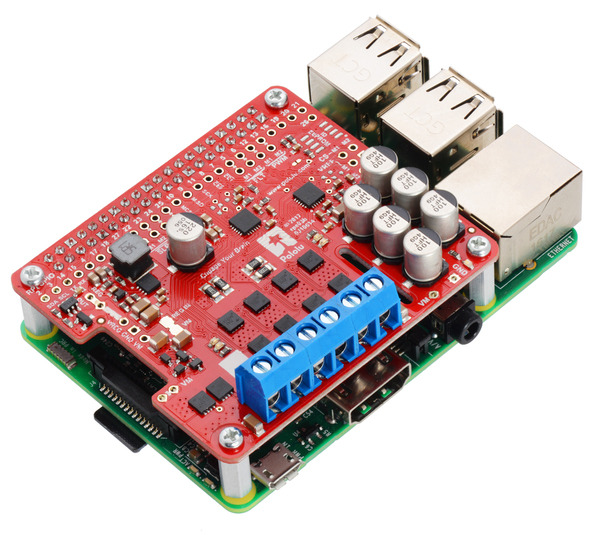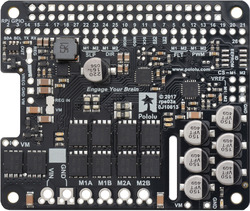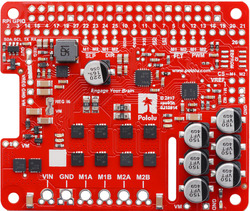Pololu Blog »
Now for Raspberry Pi too: Dual G2 High-Power Motor Drivers
As Jan promised yesterday, our new dual motor drivers are now also available as Raspberry Pi expansion boards! The Dual G2 High-Power Motor Drivers for Raspberry Pi feature two discrete MOSFET H-bridges on a board designed to plug directly into a Raspberry Pi (Model B+ or newer), and they also include an integrated 5 V, 2.5 A switching step-down regulator that allows a single power supply to power both the motors and the Raspberry Pi. We provide a Python library for Raspberry Pi to make it easy to get started using the drivers.
|
|
As with the Arduino shield (or standalone) versions, two different PCBs are used for these drivers: the black board has 5×6 mm MOSFETs and the red board has 3×3 mm MOSFETs. Again, each board is available with 30 V or 40 V MOSFETs for a total of four options:
 Dual G2 High- Power Motor Driver 18v22 for Raspberry Pi |
 Dual G2 High- Power Motor Driver 18v18 for Raspberry Pi |
 Dual G2 High- Power Motor Driver 24v18 for Raspberry Pi |
 Dual G2 High- Power Motor Driver 24v14 for Raspberry Pi |
|
|---|---|---|---|---|
| Absolute max input voltage: |
30 V | 36 V* | ||
| Max nominal battery voltage: |
18 V | 28 V | ||
| Max continuous current per channel: |
22 A | 18 A | 18 A | 14 A |
| Default active current- limiting threshold: |
60 A | 50 A | 40 A | |
| Available with connectors installed? |
No | Yes | No | Yes |
* 40 V if regulator is disconnected
Unlike the Arduino, the Raspberry Pi does not have analog inputs, so there isn’t an easy way to do current sensing with these boards. However, the current sensing pins are exposed for advanced users who might want to add an external ADC or otherwise make use of the current sense feedback.
Until now, our motor driver offerings for the Raspberry Pi have been limited to our dual MC33926 and DRV8835 add-on boards, which handle much less current. One of our other favorite integrated motor drivers, the VNH5019, would have been a nice step up in power from the MC33926, but it has one big downside…literally. Its footprint measures around 17 mm by 19 mm, and you can see that on our dual VNH5019 Arduino shield, the two driver ICs take up most of the width of the board:
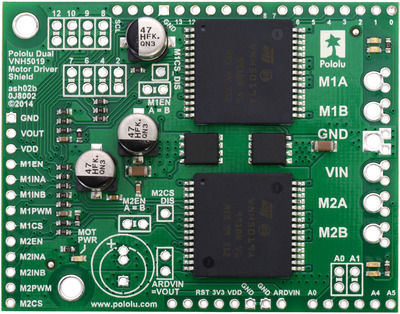 |
Pololu dual VNH5019 motor driver shield for Arduino. |
|---|
We try to make our Raspberry Pi expansion boards conform to the HAT (Hardware Attached on Top) mechanical specification when we can, and that spec recommends including a slot in the middle of the board to accommodate a flex cable plugging into the Raspberry Pi’s camera connector.
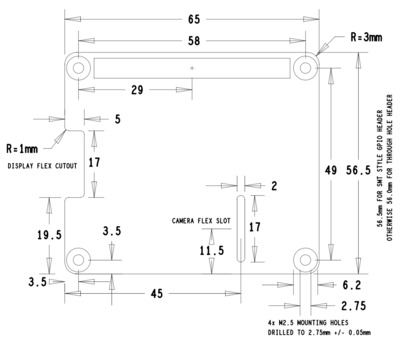 |
Raspberry Pi HAT mechanical specification drawing. |
|---|
Combined with the cutout for the other flex connector, this space limitation means that it would be difficult—if not impossible—to make a VNH5019 motor driver expansion board for the Raspberry Pi that is not annoyingly obstructive. So we are excited that the G2 design, with its discrete MOSFET H-bridges, provided enough layout flexibility for us to create these high-power dual motor driver expansions without making such compromises. We hope that they will open up new possibilities for bigger and more powerful Raspberry Pi robots!
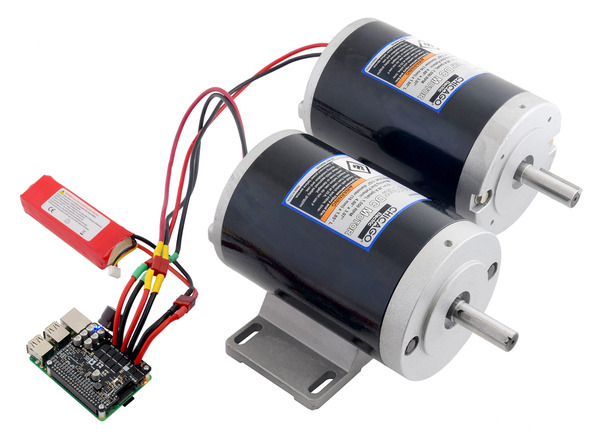 |
